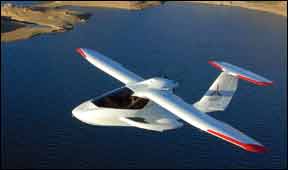It’s been a rough few years for private aviation. The advent of GPS, moving map displays and so-called plastic airplanes in the 1990s brought with them renewed growth and interest. Much of that persisted, despite best efforts from national agencies concerned with security above all else, during the following decade. By 2007, signs of economic upheaval put a damper on flying activity. By the time 2008 and its sky-high aviation fuel prices rolled through, used personal aircraft were being sold at unheard-of low prices. Both trends flattened out in the years since, but fuel remains a significant operational expense and many used airframes aren’t worth what they were 15 years ago.

288
But there may be some light at the end of the tunnel. Earlier this year, Cessna announced a diesel-powered version of its venerable 182 model, the light-sport market continues to defy many predictions and avionics manufacturers—perhaps general aviation’s only bright spot—are bringing out new, more-capable products even as they gear up for the 2020 ADS-B deadline. Many projects more jaded observers thought would be gone by now—like the Kestrel turboprop single and the revived Eclipse VLJ—are still in the game. At the highest end, Gulfstream just announced type certification of its latest flagship, the 650.
Meanwhile, at its upcoming Expo, AOPA will be rolling out a new program, the Center to Advance the Pilot Community, a social-networking effort designed to boost student starts and completions. Is it time to get out the party favors and celebrate general aviation’s revival? Maybe.
I’m perhaps more cynical than the average member of this community, but I’m seeing slight upticks in activity, interest and investment in GA. If I’m seeing them, then maybe you are, too.
Of course, it’s way too early for the industry to declare its long nightmare is over. But I think one thing is certain: Just as with so many other communities and industries impacted by the Great Recession, what emerges on the other side will be different. From where I sit, we’ll be looking at more innovative airframes—the Icon A5 and the Terrafugia Transition come to mind. We’ll also be looking at more fuel- and carbon-conscious operating patterns, perhaps designed around recreation and shorter day-trip use of personal airplanes than the multi-day, nation-spanning jaunts to which we’ve been indoctrinated. Electric aircraft are another promising development, though clearly not with long-range travel in mind.
In 10 years, we’ll all know how it came out. Perhaps we’ll be chuckling about our skepticism on ADS-B and drones, maybe even celebrating the loosening of security-related airspace restrictions. Here’s hoping.
— Jeb Burnside



